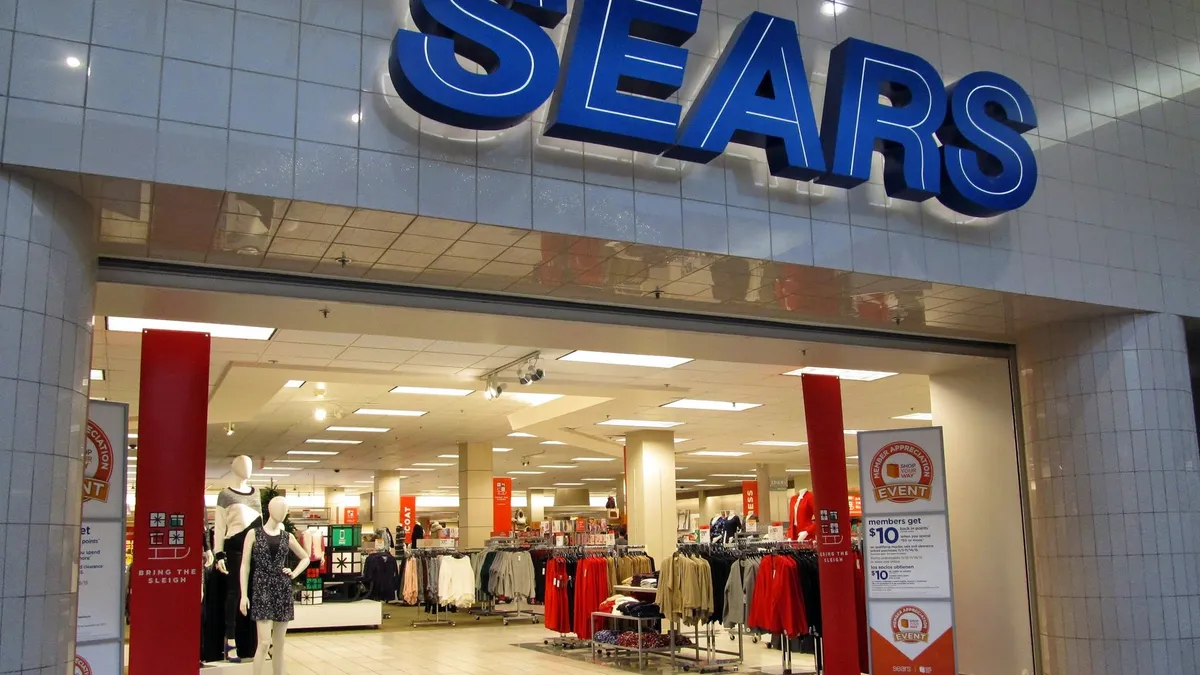Dive Brief:
-
Murmurs about Sears’ inability to keep up with vendor payments are growing louder, and at least six suppliers have reduced shipments to the struggling retailer out of fears it will go bankrupt, Business Insider reports.
-
Supplier concern has “really accelerated in the last six to 12 months," Marc Wagman, executive vice president of trade credit and political risk at insurance brokerage firm Arthur J. Gallagher & Co., which represents the Sears suppliers to insurers, told Business Insider. One (which Wagman declined to name) has actually cut ties with Sears, and others may soon follow.
-
Sears spokesperson Howard Riefs denied that the retailer is near bankruptcy and told Business Insider that it has plenty of access to cash to continue its operations and turnaround efforts, and to pay its bills.
Dive Insight:
The demise of Sears has been widely anticipated for some time now, bolstered by reports of supplier angst rippling through the press last year and the year before.
Just last month, Sears Holdings disputed rumors that toy vendor Jakks Pacific suspended sales of products to its Kmart unit ahead of the holiday shopping season out of concerns that the retailer can't pay its bills. In a blog post, Sears Chief Financial Officer Jason Hollar countered that Sears has “always paid our vendors for orders we have placed and as part of the normal negotiations between retailers and vendors,” although Hollar also said that there are “occasionally disputes over prices, allocations of product and other terms.”
Sears' aggressive leveraging of its formidable real estate portfolio has helped prop it up, though many see it as a slow, painful death rather than a salvation. Conlumino CEO and retail analyst Neil Saunders in an email to Retail Dive Thursday noted that “Sears … has used asset monetization to fund the day to day operations of the business, something that in our view suggests a company circling the drain.”
In addition to defending its ability to pay its bills, Sears has taken to its blog twice this year, in July and then again in October, to assure investors and customers that its Kmart unit — once the envy of retail — is staying open. Another move that garnered the retailer an infusion of cash — a sale of its still-popular Craftsman tool brand that could be valued at $2 billion — was also, unfortunately, a divestment of one of its key attractions.
Moody's Investors Service in September downgraded Sears Holdings' Speculative Grade Liquidity rating of down to SGL-3 from SGL-2. Moody's Vice President Christina Boni said in a statement that Sears will “continue to rely on external financing and the monetization of its alternative assets to fund its operating losses.” She added that Moody’s estimates Sears’ negative operating cash flow at $1.5 billion this year. Moody’s singled out Kmart as especially troubling for Sears, noting that recent downbeat ratings of the company “reflect our view on the uncertainty of the viability of the Kmart franchise in particular given its meaningful market share erosion.”
Earlier this year Sears Holdings said it would close 68 Kmart and 10 Sears stores nationwide this summer. Sears Q2 revenue fell 8.8% to $5.66 billion and its loss widened to loss to $395 million during the second quarter in what CEO Edward Lampert called “a challenging competitive environment.”













